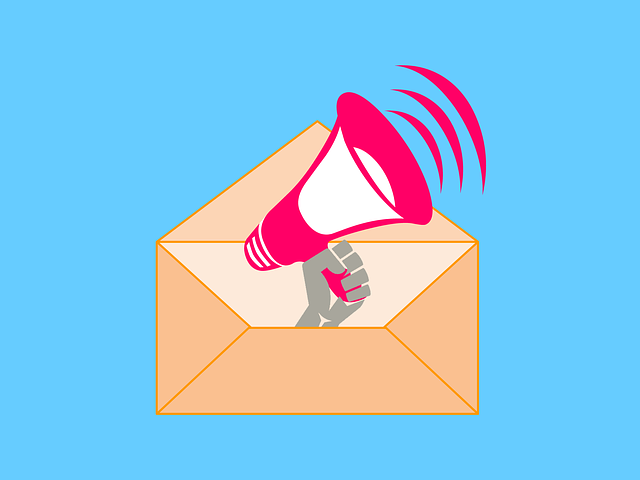Are you tired of receiving endless promotional emails flooding your inbox? Well, you’re not alone. But here’s the twist – those same emails can be a game-changer for e-commerce businesses. Yes, you read that right. Email marketing, despite its reputation as an annoyance, has proven to be a powerful tool for driving sales and building customer relationships.
This article will explore the pros and cons of email marketing for e-commerce, providing you with valuable insights into why it may be worth your while. From reaching a targeted audience and cost-effective marketing strategies to increased customer engagement and measurable results, email marketing offers a plethora of benefits. However, it’s not without its challenges.
We’ll also highlight the potential drawbacks and share best practices to ensure your email marketing efforts are successful. So, let’s dive in and unravel the true potential of email marketing for your e-commerce business.
Key Takeaways
- Email marketing is a powerful tool for driving sales and building customer relationships in e-commerce.
- It is a cost-effective method compared to traditional advertising channels like print or TV ads.
- Personalization and segmentation techniques can significantly increase email open rates and click-through rates.
- Detailed metrics and tracking allow for data-driven decisions and provide insights into campaign success.
Targeted Audience Reach
You’ll love how email marketing allows you to reach your targeted audience with precision and effectiveness! By utilizing personalization techniques and email segmentation strategies, you can tailor your messages to match the specific needs and preferences of your customers.
With email marketing, you have the power to send personalized recommendations, offers, and updates directly to your customers’ inboxes. This level of personalization not only increases engagement but also boosts conversion rates and drives sales. According to a study by Campaign Monitor, emails with personalized subject lines are 26% more likely to be opened.
So, by implementing targeted email marketing campaigns, you can ensure that your message reaches the right people at the right time, maximizing your chances of success. With such a powerful and targeted approach, email marketing is a cost-effective marketing strategy that delivers impressive results.
In the subsequent section, we will discuss how email marketing can help you achieve your goals without breaking the bank.
Cost-Effective Marketing Strategy
A cost-effective strategy that won’t break the bank is email marketing for e-commerce. With email marketing, you can reach a large number of targeted customers without spending a fortune.
Here are some reasons why email marketing is a cost-effective marketing strategy for e-commerce:
-
Reduced Costs: Compared to traditional marketing methods like print or TV ads, email marketing is much more affordable. You don’t have to spend money on printing, postage, or airtime.
-
Increased Customer Retention: Email marketing allows you to build strong relationships with your customers. By sending personalized content, you can keep them engaged and increase their loyalty to your brand.
-
Higher ROI: Email marketing consistently provides one of the highest returns on investment. With a well-crafted email campaign, you can drive sales and generate revenue.
-
Measurable Results: Unlike other marketing channels, email marketing provides detailed metrics that allow you to track the success of your campaigns and make data-driven decisions.
By utilizing email marketing, you can not only save money but also increase customer engagement.
Increased Customer Engagement
By implementing an effective email campaign, you can captivate and involve your customers, creating a vibrant and interactive community. Email marketing allows you to engage with customers on a personal level, increasing customer retention and loyalty.
By sending personalized content tailored to their interests and preferences, you can establish a connection that goes beyond a simple transaction. Studies show that personalized emails have a 29% higher open rate and a 41% higher click-through rate compared to generic emails. This indicates that customers are more likely to engage with content that is relevant to them.
Furthermore, email marketing allows you to track customer engagement through metrics such as open rates, click-through rates, and conversion rates. These measurable results and analytics provide valuable insights into the effectiveness of your campaigns and help you optimize your strategies for even better results.
Transitioning into the subsequent section, these metrics will allow you to make informed decisions and further enhance your email marketing efforts.
Measurable Results and Analytics
When it comes to measuring the success of your email marketing efforts, two key points to focus on are tracking open and click rates, as well as analyzing conversion rates.
By tracking open and click rates, you can determine how engaged your audience is with your emails and make adjustments to improve engagement.
Analyzing conversion rates allows you to see how effective your emails are at driving desired actions, such as making a purchase or signing up for a newsletter.
These measurable results and analytics provide valuable insights that can help you optimize your email marketing strategy for maximum impact.
Track Open and Click Rates
Improve your email marketing strategy by tracking open and click rates – it’s like having a personal assistant who tells you which areas of your campaign are hitting the mark and which ones need a little fine-tuning.
By monitoring these metrics, you gain valuable insights into your audience’s engagement levels and preferences. Email personalization and segmentation play a crucial role in increasing open and click rates. Tailoring your emails to individual recipients based on their preferences and behaviors can significantly boost engagement.
Analyzing these rates allows you to identify what content resonates with your audience and what doesn’t, helping you refine your messaging and optimize future campaigns. But tracking open and click rates is just the first step.
To dive deeper into the effectiveness of your email marketing, let’s analyze conversion rates.
Analyze Conversion Rates
Now that you have tracked your email open and click rates, it’s time to analyze your conversion rates to truly understand the impact of your email marketing efforts. Conversion rate optimization is a crucial aspect of e-commerce as it directly affects your revenue and ROI. By analyzing your conversion rates, you can identify areas of improvement and implement strategies to increase your overall sales. One effective technique is A/B testing, where you compare different elements of your emails, such as subject lines, call-to-action buttons, or product placements, to see which version performs better. By utilizing A/B testing techniques, you can make data-driven decisions that optimize your conversion rates and drive more sales. In the table below, you can see the results of an A/B test conducted by an e-commerce company, highlighting the impact on conversion rates when testing two different subject lines. With this valuable insight, you can now explore the potential challenges and drawbacks of email marketing for e-commerce.
| Subject Line A | Subject Line B | Conversion Rate |
|---|---|---|
| Sale Alert! | Limited Offer | 3.2% |
| Exclusive Deal | Limited Offer | 4.8% |
| Huge Discount | Limited Offer | 2.6% |
| Don’t Miss Out | Limited Offer | 3.9% |
| Last Chance! | Limited Offer | 5.1% |
Now, let’s delve into the potential challenges and drawbacks of email marketing for e-commerce.
Potential Challenges and Drawbacks
When it comes to email marketing for e-commerce, there are potential challenges and drawbacks that you need to be aware of.
One of the risks is the possibility of your emails being flagged as spam and filtered out by email providers. This can significantly decrease the effectiveness of your campaigns.
Additionally, you may also face unsubscribes and opt-outs from your email list, which can impact your reach and engagement with your audience.
Risk of Spam Filters
Despite the risk of spam filters, email marketing remains a valuable tool for e-commerce businesses. While it’s true that some emails may end up in spam folders, there are ways to improve email deliverability and increase inbox placement. Here are three key strategies to overcome this challenge:
-
Maintain a clean and engaged email list: Regularly remove inactive subscribers and ensure that your email list only contains people who’re genuinely interested in your products or services.
-
Use a reputable email service provider: Partnering with a trusted email service provider can significantly reduce the likelihood of your emails being flagged as spam.
-
Optimize your email content: Avoid spam trigger words and phrases, personalize your emails, and provide valuable and relevant content to increase engagement and decrease the chances of being filtered.
By implementing these strategies, you can minimize the risk of spam filters and maximize the effectiveness of your email marketing campaigns. This’ll lead to increased customer engagement and conversions.
Transitioning into the next section, let’s now discuss the importance of managing unsubscribes and opt-outs.
Unsubscribes and Opt-Outs
To truly connect with your audience, you must give them the freedom to spread their wings and gracefully unsubscribe from your content, like a bird soaring away from its nest in search of new horizons.
Unsubscribe regulations and opt-out preferences play a crucial role in email marketing. They ensure that your subscribers have control over their inbox and receive only the content they want. By providing a clear and easy way to unsubscribe, you not only comply with legal requirements but also show respect for your audience’s preferences.
Monitoring unsubscribe rates can provide valuable insights into the effectiveness of your email campaigns and help you refine your strategies. Understanding why people choose to opt out can guide you in creating more relevant and engaging content.
Transitioning into the subsequent section, let’s now explore the best practices for successful email marketing.
Best Practices for Successful Email Marketing
Implementing best practices is crucial for achieving success in email marketing for e-commerce, as it allows businesses to effectively engage with their audience and drive conversions. Personalization techniques and email automation are two key strategies that can greatly enhance the effectiveness of email campaigns. By personalizing emails with customer names, preferences, and purchase history, businesses can create a more tailored and relevant experience, increasing open rates and click-through rates. Additionally, implementing email automation allows businesses to send timely and targeted messages based on customer behavior, ensuring that the right message reaches the right person at the right time. This not only saves time and effort but also improves customer engagement and ultimately boosts sales. The table below summarizes the benefits of personalization techniques and email automation in email marketing for e-commerce.
| Personalization Techniques | Email Automation |
|---|---|
| Higher open rates | Timely and targeted |
| Increased click-through rates | Saves time and effort |
| Enhanced customer engagement | Improves sales |
Frequently Asked Questions
How can I ensure that my emails reach the targeted audience effectively?
To improve email open rates and increase email deliverability, focus on optimizing your email content and sender reputation.
Craft engaging subject lines that entice recipients to open your emails.
Segment your audience and personalize your messages to make them more relevant.
Ensure your emails are mobile-friendly and use responsive design.
Regularly clean your email list to remove inactive subscribers.
Implement authentication protocols like SPF and DKIM to enhance your sender reputation.
Monitor your email metrics and adjust your strategies based on data-driven insights.
What are some alternative cost-effective marketing strategies that can complement email marketing for e-commerce?
To complement email marketing for e-commerce, consider leveraging cost-effective strategies like social media promotions and influencer collaborations.
Social media promotions can expand your reach, engage with your target audience, and drive traffic to your e-commerce platform.
Meanwhile, influencer collaborations can help build trust and credibility, as well as tap into the influencer’s audience.
These strategies provide additional avenues to connect with your target audience, increase brand awareness, and boost sales.
How can I improve customer engagement through email marketing?
To improve customer engagement through email marketing, use personalization strategies. Address customers by their names and tailor content to their preferences and purchase history.
Additionally, incorporate interactive content in your emails, such as quizzes, polls, or surveys, to encourage customer participation. According to a study, personalized emails have a 26% higher open rate and generate 6 times more revenue. Interactive emails also increase click-through rates by an average of 73%.
Engage your customers with personalized and interactive email marketing strategies.
What are some key metrics and analytics that can help me measure the success of my email marketing campaigns?
To measure the success of your email marketing campaigns, two key metrics to focus on are email marketing ROI and email open rates. Email marketing ROI helps you understand the return on investment of your email campaigns. Email open rates indicate how many recipients actually opened your emails. By tracking these metrics, you can gain valuable insights into the effectiveness of your campaigns and make data-driven decisions to improve customer engagement and drive conversions.
What are some potential challenges and drawbacks that I should be aware of when implementing email marketing for my e-commerce business?
When implementing email marketing for your e-commerce business, it’s crucial to be aware of potential challenges and drawbacks.
One major challenge is email deliverability, as your messages may end up in spam folders or not reach the intended recipients. To overcome this, focus on building a quality email list and following best practices for email sending.
Another drawback is the need for email automation, which requires investing in the right tools and systems to streamline your campaigns and ensure efficiency.
Conclusion
Congratulations on finishing the article! You’ve learned about the pros and cons of email marketing for e-commerce. By implementing this cost-effective strategy, you can reach a targeted audience and increase customer engagement.
With measurable results and analytics, you can track your success. However, it’s important to be aware of potential challenges and drawbacks. Remember to follow best practices for successful email marketing.
By utilizing this powerful tool, you can drive sales and foster customer loyalty. Don’t miss out on the opportunity to take your e-commerce business to new heights!






